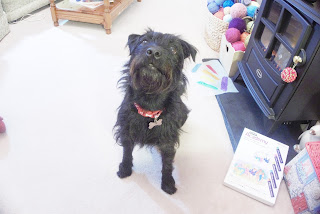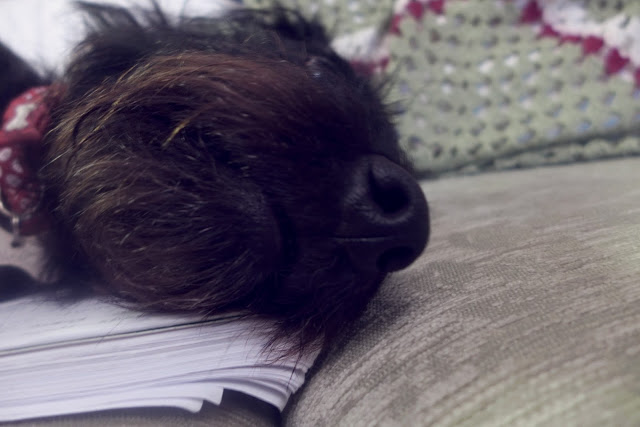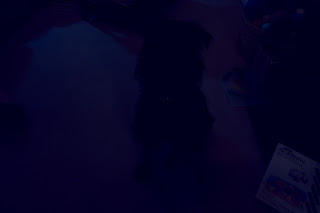Wednesday, 28 December 2016
Tuesday, 1 November 2016
Preliminary Task
How well does your preliminary task fulfil the brief?
I think my preliminary task mainly fulfils the brief as it includes a photograph of a student in medium close up range. Both the front cover and contents page images I've taken myself and I've used Photoshop to layout text on the pages.
What obstacles did you overcome in order to complete the preliminary task?
The main issue I encountered when doing the preliminary task was that I didn't know how to edit pictures on and generally use Photoshop. I overcame this problem by watching tutorials on YouTube that gave me a better idea of how to use the program. I wanted to use white text on the contents page but it wouldn't show up on the background image, and I overcame this problem by editing the picture to make it darker so the text stood out more. I also had people in the background of my front cover photo, so I blurred the background using the blur tool on Photoshop to make them less recognisable. However I think I should have thought more about the background before I took the photograph.
What tutorials did you use to help you complete the preliminary task?
I used Photoshop tutorials (listed in the 'tutorials' section of the blog)
I believe I could have used the Panasonic Lumix camera rather than the camera on my phone to make the pictures better quality, as the picture I've used is a bit grainy. I could also have used more eye catching sell lines that would make people want to read the magazine and make it more interesting. I could have made my magazine cover more unique by having a main theme and arranging the layout around that, e.g. art in the school. I wasn't very experienced with Photoshop when I did this and I think I could have improved the quality of my magazine cover by watching tutorials on how to design a magazine cover. I also could have added a bar code to make the magazine look more professional.
What important lessons have you learned in preparation for completing the main task?
From doing the preliminary task I've learned how important lighting is in taking pictures. My front cover photo wasn't very clear as it was taken in a badly lit room with only the camera on my phone, so when I do the main task I'll take the picture outside or make sure the light is better. I've also learned that you have to think about the whole mise-en-scene when you take a photo as I didn't think about the background of my front cover photo properly and it looked messy. When I do the main task I'll plan what the background will be beforehand so it fits with the theme of the magazine.
Monday, 3 October 2016
Photoshop Tutorials
These are some of the tutorials I watchrd to learn how to use photoshop:
https://www.youtube.com/watch?v=xS5uh5TCXcU
http://lifehacker.com/5753459/learn-the-basics-of-photoshop-in-under-25-minutes
https://blog.udemy.com/how-to-blur-background-in-photoshop/
http://www.photoshopessentials.com/photo-effects/overlap-text/
https://www.youtube.com/watch?v=xS5uh5TCXcU
http://lifehacker.com/5753459/learn-the-basics-of-photoshop-in-under-25-minutes
https://blog.udemy.com/how-to-blur-background-in-photoshop/
http://www.photoshopessentials.com/photo-effects/overlap-text/
Using the Panasonic Lumix


In these pictures the ISO has been changed, to make them over and under exposed
This photo has a shallow depth of field - a large aperture and a small ISO
This photo has a shallow depth of field - a large aperture and a small ISO

Sunday, 25 September 2016
Typefaces
Serif
In typography, a serif is the little extra stroke found at the end of main vertical and horizontal strokes of some letterforms. Serif fonts include Times Roman, Courier, New Century Schoolbook, and Palatino.
San Serif
A category of typefaces that do not use serifs, small lines at the ends of characters. Popular sans serif fonts include Helvetica, Avant Garde, Arial, and Geneva.
Sans Serif fonts are harder to read according to most studies, so are used for shot text components such as headlines and captions.

In typography, a serif is the little extra stroke found at the end of main vertical and horizontal strokes of some letterforms. Serif fonts include Times Roman, Courier, New Century Schoolbook, and Palatino.
San Serif
A category of typefaces that do not use serifs, small lines at the ends of characters. Popular sans serif fonts include Helvetica, Avant Garde, Arial, and Geneva.
Sans Serif fonts are harder to read according to most studies, so are used for shot text components such as headlines and captions.
Contents page research
Codes and conventions
- pictures of students doing various activities (sports)
- list of contents with page references
- one colour scheme (school colours?)
- title 'contents' clear and stands out
Tuesday, 20 September 2016
Panasonic Lumix LX7
Raw mode
A file format that captures all image data recorded when you take a photo. Because no information is compressed you're able to produce higher quality images using this setting.
Mpeg mode
A setting in which images are compressed.
Press the menu button, choose the mode by moving with the arrows.
ISO
Change the control dial to M, then press ISO and use the arrows to select a setting.
Shutter speed
Change the control dial to S, then turn the front dial right to increase the speed and left to decrease it.
F-Stop
Change the control dial to A, then turn the front dial left for a larger aperture (smaller number) and right for a smaller aperture (larger number)
https://www.youtube.com/watch?v=nWgZFZ9TSrs
ftp://ftp.panasonic.com/camera/om/dmc-lx7_en_adv_om.pdf
A file format that captures all image data recorded when you take a photo. Because no information is compressed you're able to produce higher quality images using this setting.
Mpeg mode
A setting in which images are compressed.
Press the menu button, choose the mode by moving with the arrows.
ISO
Change the control dial to M, then press ISO and use the arrows to select a setting.
Shutter speed
Change the control dial to S, then turn the front dial right to increase the speed and left to decrease it.
F-Stop
Change the control dial to A, then turn the front dial left for a larger aperture (smaller number) and right for a smaller aperture (larger number)
https://www.youtube.com/watch?v=nWgZFZ9TSrs
ftp://ftp.panasonic.com/camera/om/dmc-lx7_en_adv_om.pdf
Saturday, 17 September 2016
School Magazine Research
Friday, 16 September 2016
Key Terms
Media codes and conventions
Codes are systems of signs, which create meaning. Codes can be divided into two categories – technical and symbolic. Some codes fit both categories – music for example, is both technical and symbolic.
Conventions are the generally accepted ways of doing something. There are general conventions in any medium, such as the use of interviewee quotes in a print article, but conventions are also genre specific.
Technical codes
Technical codes are all the ways in which equipment is used to tell the story in a media text, for example the camera work in a film.
Symbolic codes
Symbolic codes show what is beneath the surface of what we see. For example, a character's actions show you how the character is feeling.
Denotation
Denotation refers to the literal meaning of a sign, the 'dictionary definition'.
Connotation
Connotation represents the various social overtones, cultural implications, or emotional meanings associated with a sign.
Mise-en-Scène
Borrowed from a French theatrical expression, meaning roughly “put into the scene”. In other words, mise-en-scène describes the stuff in the frame and the way it is shown and arranged.
Codes are systems of signs, which create meaning. Codes can be divided into two categories – technical and symbolic. Some codes fit both categories – music for example, is both technical and symbolic.
Conventions are the generally accepted ways of doing something. There are general conventions in any medium, such as the use of interviewee quotes in a print article, but conventions are also genre specific.
Technical codes
Technical codes are all the ways in which equipment is used to tell the story in a media text, for example the camera work in a film.
Symbolic codes
Symbolic codes show what is beneath the surface of what we see. For example, a character's actions show you how the character is feeling.
Denotation
Denotation refers to the literal meaning of a sign, the 'dictionary definition'.
Connotation
Connotation represents the various social overtones, cultural implications, or emotional meanings associated with a sign.
Mise-en-Scène
Borrowed from a French theatrical expression, meaning roughly “put into the scene”. In other words, mise-en-scène describes the stuff in the frame and the way it is shown and arranged.
Brief
Print
Preliminary exercise: using DTP and an image manipulation program, produce the front page of a new school/college magazine, featuring a photograph of a student in medium close-up plus some appropriately laid-out text and a masthead. Additionally candidates must produce a DTP mock-up of the layout of the contents page to demonstrate their grasp of the program.
Main task: the front page, contents and double page spread of a new music magazine (if done as a group task, each member of the group to produce an individual edition of the magazine, following the same house style). Maximum four members to a group.
All images and text used must be original, produced by the candidate(s), minimum of FOUR images per candidate.
Preliminary exercise: using DTP and an image manipulation program, produce the front page of a new school/college magazine, featuring a photograph of a student in medium close-up plus some appropriately laid-out text and a masthead. Additionally candidates must produce a DTP mock-up of the layout of the contents page to demonstrate their grasp of the program.
Main task: the front page, contents and double page spread of a new music magazine (if done as a group task, each member of the group to produce an individual edition of the magazine, following the same house style). Maximum four members to a group.
All images and text used must be original, produced by the candidate(s), minimum of FOUR images per candidate.
Tuesday, 13 September 2016
Camera Research
Camera Iris
An adjustable opening on a digital camera used to control the amount of light coming through the lens. The more the Iris opens, the more light is let in and the brighter the scene will be.
Shutter Speed
https://photographylife.com/what-is-shutter-speed-in-photography
The length of time a camera shutter is open to expose light to the camera sensor. If the shutter speed is fast the action is frozen completely, creating a sharp motion shot. If the shutter speed is slow it can create an effect called motion blur- where moving objects appear blurred along the direction of motion. This effect is used quite a bit in advertisements of cars and motorbikes, where a sense of speed and motion is communicated to the viewer by intentionally blurring the moving wheels.
ISO
The distance between nearest and furthest objects giving a focused image. Some images have very small depths of field which is called shallow depth of field, others will have a very large zone of focus which is called a deep depth of field. The closer the subject is to the camera, the shallower your depth of field becomes. Moving further away from the subject will deepen your depth of field. Depth of field is also effected by focal length of a lens control and aperture.
An adjustable opening on a digital camera used to control the amount of light coming through the lens. The more the Iris opens, the more light is let in and the brighter the scene will be.
Shutter Speed
https://photographylife.com/what-is-shutter-speed-in-photography
The length of time a camera shutter is open to expose light to the camera sensor. If the shutter speed is fast the action is frozen completely, creating a sharp motion shot. If the shutter speed is slow it can create an effect called motion blur- where moving objects appear blurred along the direction of motion. This effect is used quite a bit in advertisements of cars and motorbikes, where a sense of speed and motion is communicated to the viewer by intentionally blurring the moving wheels.
ISO
When you change your ISO setting, you're changing your cameras sensitivity to light. A low setting makes it less sensitive and a high setting makes it more so, the ISO number is found on the box and canister of the camera. A higher ISO usually translates to a noisy or "grainy" image, so as a general rule you should use the lowest possible setting for your photos, but there are situations where a higher ISO setting is desirable.
Depth of Field
The distance between nearest and furthest objects giving a focused image. Some images have very small depths of field which is called shallow depth of field, others will have a very large zone of focus which is called a deep depth of field. The closer the subject is to the camera, the shallower your depth of field becomes. Moving further away from the subject will deepen your depth of field. Depth of field is also effected by focal length of a lens control and aperture.
Subscribe to:
Comments (Atom)
























